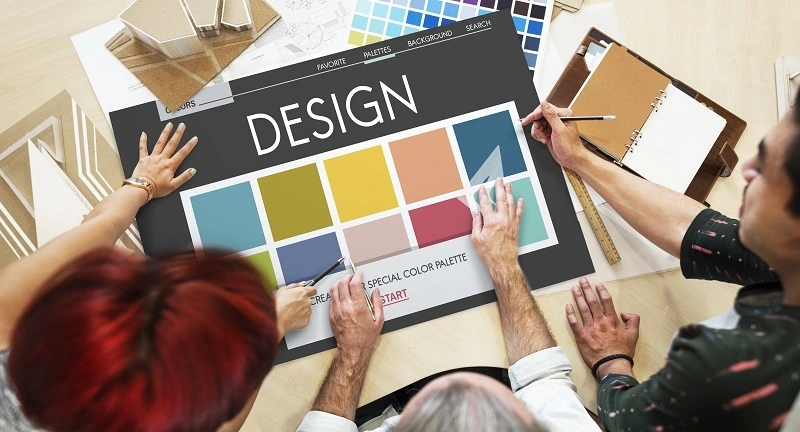
The Importance of Accessibility in Graphic Design: How to Design for Everyone
Graphic design plays a vital role in shaping our visual experiences. From websites and advertisements to packaging and printed materials, graphic design has the power to inform, engage, and inspire. However, it is crucial to recognize that not all individuals perceive or interact with visual content in the same way. This is where accessibility in graphic design becomes essential. In this blog, we will explore the importance of accessibility in graphic design and provide practical tips on how to design for everyone, ensuring inclusivity and equal access to information and experiences.
Understanding Accessibility in Graphic Design
Accessibility in graphic design refers to the practice of creating designs that are usable and understandable by individuals with disabilities or limitations. It aims to remove barriers and provide equal access to information and experiences for all users, regardless of their abilities. By considering accessibility from the outset, designers can ensure that their creations can be enjoyed and understood by a wider range of individuals, including those with visual, auditory, cognitive, or motor impairments.
Color Contrast and Legibility
Color plays a crucial role in graphic design, but it can also pose challenges for individuals with visual impairments or color blindness. Designers should carefully consider color contrast to ensure that text and important elements stand out clearly. Use high-contrast combinations between text and background colors, making sure there is enough differentiation for easy legibility. Additionally, avoid relying solely on color to convey information and consider using labels, patterns, or symbols to enhance comprehension.
Clear Typography and Readability
Typography plays a significant role in the readability of graphic design. When designing for accessibility, prioritize legible and easily readable fonts. Opt for typefaces with clear distinctions between letterforms, avoiding overly decorative or complex fonts that can hinder readability. Maintain an appropriate font size and spacing to accommodate individuals with visual impairments or reading difficulties. Additionally, provide sufficient line spacing and use hierarchical formatting to facilitate comprehension and scanning of content.
Alt Text and Descriptive Images
Images are a powerful tool in graphic design, but they can exclude individuals with visual impairments who rely on assistive technologies. To make your designs accessible, always provide alternative text (alt text) for images. Alt text is a concise and descriptive text alternative that conveys the meaning and context of the image to those who cannot see it. This allows individuals using screen readers or other assistive technologies to understand and interpret the visual content.
Considerate Use of Motion and Animation
Motion and animation can add dynamic elements to graphic design. However, they can also be overwhelming or distracting for individuals with cognitive or sensory processing difficulties. When incorporating motion or animations, consider providing options to control or disable them. Avoid rapid or flashing movements that may trigger seizures or discomfort. Providing alternatives, such as static images or transcripts for audio content, ensures inclusivity and caters to a broader range of users.
Navigational Clarity and Structure
Intuitive and well-structured navigation is crucial for users to navigate graphic design elements effectively. When designing websites or digital interfaces, provide clear headings, subheadings, and logical page structures. Use meaningful and descriptive labels for navigation menus, buttons, and links. A well-organized layout facilitates smooth navigation and enhances user experience for individuals using screen readers or keyboard-only navigation.
Test and Iterate
Testing and iterating are essential steps in ensuring accessibility in graphic design. Conduct usability testing with individuals who have disabilities or limitations to gather feedback and identify areas for improvement. Incorporate their insights into the design process and iterate accordingly. Regularly update and refine your designs to align with evolving accessibility standards and best practices.
Stay Informed and Educated
Accessibility standards and guidelines are continuously evolving. Stay informed about the latest practices and updates related to accessibility in graphic design. Follow reputable sources such as the Web Content Accessibility Guidelines (WCAG) and stay updated on industry trends and advancements in inclusive design. Attend workshops, conferences, or webinars focused on accessibility to enhance your knowledge and skills in designing for everyone. By staying informed and educated, you can continually improve your designs and make a positive impact on the user experience of individuals with disabilities.
Collaboration and Consultation
Incorporating accessibility into graphic design requires collaboration and consultation with diverse stakeholders. Engage individuals with disabilities or accessibility experts early in the design process to gain insights and perspectives. Their input can provide valuable guidance on potential barriers and effective solutions. Collaborative efforts ensure that the final designs are inclusive, usable, and considerate of the diverse needs of the target audience.
Promote Awareness and Advocacy
Lastly, as a graphic designer, you have the opportunity to promote awareness and advocacy for accessibility in the industry. Educate your colleagues, clients, and peers about the importance of inclusive design practices. Encourage discussions on accessibility and highlight the benefits it brings to both users and businesses. By advocating for accessibility, you contribute to a more inclusive and equitable design landscape.
Designing for accessibility is not just a moral responsibility; it is a fundamental aspect of creating inclusive and user-centered graphic design. By considering the diverse needs of individuals with disabilities or limitations, we can ensure that everyone has equal access to information and experiences. Implementing practices such as color contrast, legible typography, alt text for images, and navigational clarity, among others, contributes to a more accessible design. By staying informed, collaborating, and advocating for accessibility, graphic designers can make a significant impact in fostering inclusivity and designing for everyone. Let us embrace the importance of accessibility in graphic design and strive to create designs that truly leave no one behind.